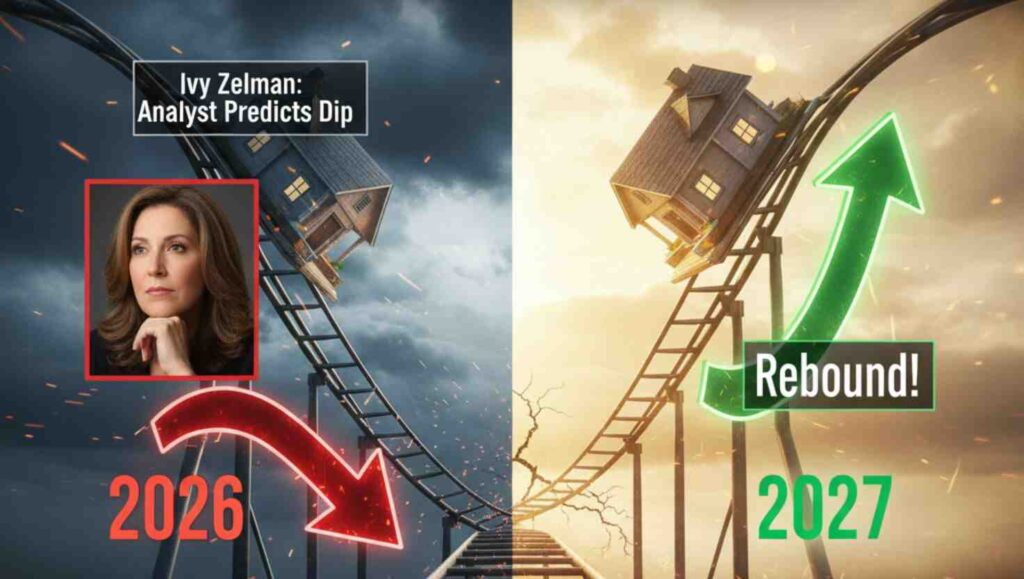Housing Market Rollercoaster: Analyst Ivy Zelman Predicts a 2026 Dip Before a 2027 Rebound
Housing Market Rollercoaster: Analyst Ivy Zelman Predicts a 2026 Dip Before a 2027 Rebound Brace yourselves for a slight downturn in the housing market next year, but don’t expect it to last. That’s the latest forecast from renowned housing market analyst Ivy Zelman, who anticipates a temporary dip in home prices in 2026 followed by a swift rebound in 2027.

Zelman, the CEO of Zelman & Associates, is a respected voice in the real estate industry, known for her in-depth analysis and accurate predictions. Her forecast offers a roadmap for potential homebuyers, sellers, and real estate investors navigating the complexities of the current market.

What’s Behind the Expected 2026 Dip?
According to Zelman, a confluence of factors is expected to contribute to a cooling of the housing market in 2026. The primary driver is the persistent issue of affordability. With mortgage rates remaining elevated and home prices in many regions still near historic highs, the dream of homeownership is becoming increasingly difficult for many Americans to achieve.
Learn more about Ivy Zelman’s housing market predictions in this insightful video.
Go to Homepage
Another significant factor is the growing dominance of public home builders. These large corporations have the capital and resources to ramp up construction, leading to an increase in housing supply. While this is good news for buyers in the long run, the influx of new homes, particularly in the South and Southwest, could outpace demand in the short term, putting downward pressure on prices.
Furthermore, labor shortages in the construction industry continue to be a challenge, potentially impacting the quality and cost of new builds. Zelman also points to a potential increase in the number of existing homes hitting the market as more homeowners come to terms with the idea that the ultra-low mortgage rates of the past are unlikely to return soon. This “lock-in effect,” where homeowners are hesitant to sell and give up their low-rate mortgages, has been a major constraint on inventory. As this effect wanes, a rise in listings could further contribute to a more buyer-friendly market.
The 2027 Rebound: A Return to Growth
While 2026 may see a temporary price correction, Zelman’s forecast calls for a rebound in 2027. This optimism is rooted in several key economic and demographic trends.

One of the primary drivers of the anticipated recovery is the expectation of improving rent growth. As the affordability of homeownership remains a challenge, more people will likely turn to the rental market, boosting demand and, consequently, rental prices. This, in turn, can make homeownership a more attractive option for those who can afford it, reigniting demand in the for-sale market.
Additionally, underlying demographic trends, such as the large number of millennials entering their prime home-buying years, are expected to provide a steady stream of demand for housing in the long term.
Potential policy changes at the federal and local levels could also play a role in stimulating the housing market. Initiatives aimed at increasing housing supply, reducing regulatory burdens on builders, and providing assistance to first-time homebuyers could all contribute to a more robust market in 2027 and beyond.
What Does This Mean for You?
For prospective home buyers, 2026 could present a window of opportunity. A temporary dip in prices, coupled with a potential increase in the number of homes for sale, could create a more favorable buying environment than has been seen in recent years. However, it will be crucial to be financially prepared, with a good credit score and a solid down payment, to take advantage of these conditions.
Sellers, on the other hand, may need to adjust their expectations in 2026. The days of multiple offers and bidding wars may become less common, and pricing their homes competitively will be key to a successful sale.
For real estate investors, Zelman’s forecast suggests a potential “buy the dip” opportunity in 2026. However, as with any investment, thorough research and a long-term perspective will be essential.
Ultimately, Ivy Zelman’s prediction of a temporary dip followed by a rebound offers a nuanced view of the housing market’s future. While challenges remain, the underlying fundamentals of the market suggest a period of adjustment rather than a prolonged downturn. As always, local market conditions will vary, and it’s essential to stay informed and consult with real estate professionals to make the ideal decisions for your individual circumstances.
